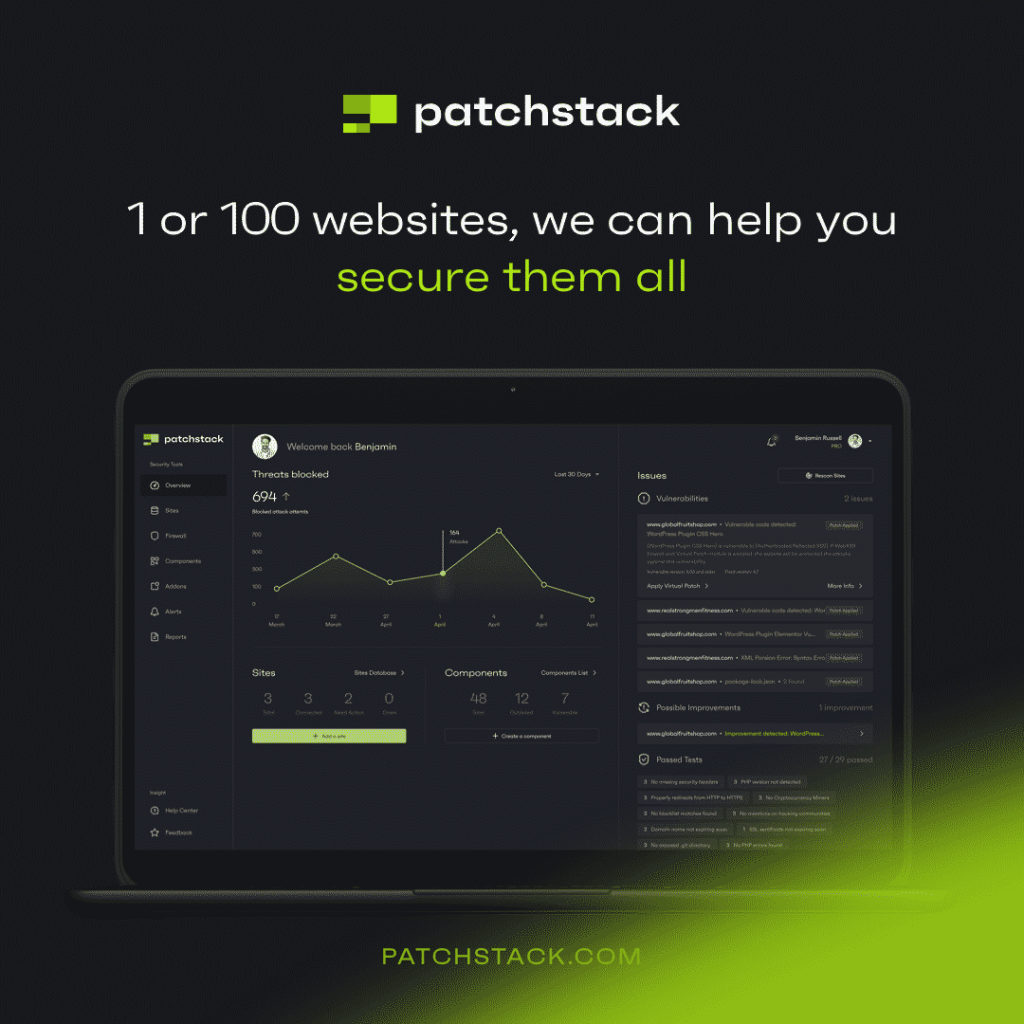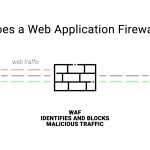This article explains what a web application firewall is and how it works.
What is a web application firewall?
A web application firewall (short for WAF) is an application firewall that monitors, filters, and blocks traffic that may be harmful to your site.
Web application firewalls are for blocking and catching malicious traffic before it reaches the actual web server.

Web application firewalls, and firewall in general consists of multiple components working together to block malicious traffic and prevent false-positive results.
A web application firewall is different from a traditional firewall in a way that it does more than just block specific IP addresses or ports, it goes deeper into web traffic looking for signs of an attack or possible injection.
It is also customizable – there are many possible rules specific to different applications.
A web application firewall (WAF) is an application firewall for HTTP applications. It applies a set of rules to an HTTP conversation. Generally, these rules cover common attacks such as cross-site scripting (XSS) and SQL injection. (source)
Whitelisting
The whitelist contains a list of “good” things that should pass firewall rules and not be checked for malicious traffic.
Let’s say we have a form that is accepting HTML code by design, we want to put that form in the whitelist to prevent false positives for XSS/HTML injections.
Blacklisting
A blacklist is the complete opposite of a whitelist and contains a list of “bad” things that shouldn’t pass the firewall processor.
Hybrid
Hybrid is a combination of both whitelist and blacklist. Nowadays, it is the most common technique used by modern firewalls.
Signature-based detection
Signature-based detection is falling more into intrusion detection than firewalls. However, many modern firewalls include this functionality which looks for specific patterns that are known to be malicious and blocks those requests.
Why do you need a web application firewall?
Hackers are always innovating and finding new ways to get access to your site. It means that having a good security-minded coding technique and implementing security measures already in the coding process may not be enough.
PCI DSS 3.1 requirement 6.6 suggests WAF:
“Installing an automated technical solution that detects and prevents web based attacks (for example, a web application firewall) in front of public facing web applications, to continually check all traffic”.
Keep in mind that a web application firewall is a highly specialized security tool specifically designed to protect web applications, so if this is the only security-related investment your company has, then in today’s world it’s unfortunately still not enough.
Why is it important to protect your website?
For example, 64% of companies have experienced web-based attacks based on currently available statistics. 62% experienced phishing & social engineering attacks and 59% of companies experienced malicious code and botnets. (source)
When talking about website security and CMS security the infections are also rising actively. For example, WordPress continues to be the leading infected website CMS.
Read the whitepaper about WordPress security in 2021 here.
On average, about 30 000 to 50 000 websites get hacked every day and in reality, the majority of these 30,000 sites are legitimate small businesses that are unwittingly distributing malicious code for the cybercriminals.
Typically, a web interface that is facing the public internet has been considered to be the most vulnerable and “risky” when it comes to vulnerabilities therefore websites are one of the main targets for hackers.
The most common types of attacks targeted to websites are cross-site scripting (XSS), SQL injection, and Arbitrary Remote Code Execution.
Take a look at the latest WordPress vulnerabilities here.
How to protect a website from hackers?
After you leave your home or office, you lock your doors. It’s elementary, right? But like locks on your office or home door, you should also have a “lock” on your home on the internet.
It is important because occasionally there can be someone with malicious intent who could walk in and steal your data.

For keeping your website safe, you’ll have some options to decide between – you can do the manual work, harden your site with your own knowledge, or with the help of an expert.
That will also include constant updates, manual monitoring, backups, and patches.
Or you can find some help and let the web application firewall do the dirty work for you. To build layers of security around your site you should have a security system to serve as your website’s first line of defense against hacking attacks. A web application firewall is that first line of defense.
Patchstack can help you with protecting your WordPress sites from plugin vulnerabilities with its managed web application firewall.
How to protect your websites from plugin vulnerabilities?
Patchstack is the #1 company in providing protection from WordPress plugin, theme, and core vulnerabilities. We also keep the most updated database of WordPress vulnerabilities.
With Patchstack you can identify security vulnerabilities in plugins, themes, and WordPress core.
Take a look if you have any vulnerable plugins on your WordPress site by signing up here.
When you have installed Patchstack on your site you will start receiving vPatches. It means that the Patchstack security team will send patches to your site if you have any vulnerability present.
This will help you to eliminate the security risk without you having to change the code or your website yourself.
You can also see detailed reports from the Patchstack dashboard to keep an eye on all the sites (you can add unlimited sites to your account) you have.

Start your 14-day free trial with Patchstack and protect your websites from plugin vulnerabilities now. Try for free here.
Frequently asked questions about web application firewall
What is WAF?
A web application firewall (short for WAF) is an application firewall that monitors, filters, and blocks traffic that may be harmful to your site.
What does WAF mean (WAF meaning)?
WAF is short for web application firewall. A web application firewall is an application firewall that monitors, filters, and blocks traffic that may be harmful to your site.






